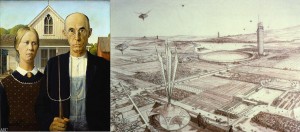Estaba desesperado. Caminaba en círculos en su loft newyorkino con vaso de wishky sin hielo en la mano izquierda. Su mano derecha sostenía un cigarro que no lo quemaba al pegarse repetidamente con angustia en la frente. Esa misma mañana había recibido una citación de la corte. El profesor Cohan había sido denunciado por plagio. Hasta ahora la denuncia era anónima, justamente la citación era para encontrarse con el denunciante esa misma tarde.
– No entiendo, no lo entiendo. Murmuraba mientras se ataba los botones de la camisa y continuaba golpeándose la frente, esta vez esporádicamente y con un nuevo cigarro en mano.
Luego de haber ganado el premio Faulkner por su novela Infinity, la vida de Cohan parecía haberse poblado de una serie de eventos miserables. Primero la trágica muerte de su hermana menor, luego la ruptura con Megan, una ex alumna con había tenido una larga y romántica relación; y ahora esto. Esta agria miseria había comenzado a tatuar la expresión de tristeza en su rostro.
Pantalón de pana fina marrón claro, chaleco de lana verde inglés, lentes circulares y una bufanda escocesa en tonos oscuros casi negros; Cohan paró un taxi en Madison y la calle 53. En menos de cinco minutos estaba en la puerta de la corte.
Esperó a ser llamado sentado con el torso erguido y los ojos fijos en el suelo de mármol del inmenso hall. Los pasos resonaban y Cohan parecía estar hipnotizado por el ruido. Tuvo los ojos clavados en el piso hasta que unas botas de taco bajo talle 36 de cuero negro, muy opaco, se acercaron decididamente para sentarse a su lado. No le fue necesario levantar la vista para reconocer el andar de Megan. Quedo inmóvil y por un segundo pensó que Megan había venido a apoyarlo, a acompañarlo. Ese ingenuo segundo terminó con una risa asimétrica y una mirada por arriba del hombro:
-Megan, dijo con tono despectivo.
Megan llevaba una pollera corta de gamuza celeste. Todo el resto de su atuendo era negro: su tapado, su gorro, cartera, bufanda, sus medias y las botas. Todo excepto su pelo, ese día más rojo que de costumbre.
– Buenas tardes Profesor. -Respondió ella amablemente pero sin esconder el enojo en sus ojos.
– No me entra en la cabeza Megan.
– Profesor, usted no me ha dado otra opción. Le tengo mucho aprecio pero me ha traicionado.
– Megan, te lo conté todo Megan.
– Profesor, puede que se haya inspirado en mis ideas sin notarlo y esté un tanto confundido. Mi intención no es humillarlo. Sólo quiero que se me reconozca mi cuento.
– ¡Era nuestro ritual! Todas las noches durante 359 noches.- Dijo Cohan con rabia y ya sin rastro de desprecio en su tono.
– Profesor no creo estar entendiendo de qué habla. Respondió Megan atónita.
– Te contaba mis avances y tú los tuyos entre besos y vino y…- Le explicó Cohan como si ella no lo recordara. -Nos queríamos.
– Profesor nos están llamando. Repitió Megan un tanto asustada.
– Y a ti nunca te gustó Infinity, no lo entendías. Querías que se pareciera más a mis otros cuentos.
Cohan había pasado de estar erguido a retorcerse en su asiento con las manos rígidas en los posa brazos y los ojos a punto de desbordar.
– Lo están llamando Profesor. Nos están llamando.- Volvió a repetir Megan ahora además de asustada incómoda.
– Y ni siquiera supiste terminarlo sola. Tuviste que esperar hasta el final. Te fuiste esa misma noche en la que conté el final.
El funcionario que estaba llamando a Cohan desde hace unos minutos se acercó y lo invitó a pasar a la sala. Megan miró al hombre reconfortada, estaba tensa, y explicó que necesitaba tomar aire, sólo le llevaría unos minutos.
El profesor se levantó con calma, caminó hacia la sala y un segundo antes de entornar la puerta giró la vista hacia Megan.
El hall estaba vacío, nadie más miraba, el aire estaba estancado. Ella miró primero hacia los costados y se aseguró de que efectivamente no hubiese un alma. Alzó las cejas, entrecerró sus ojos y sonrió profundamente la victoria.








